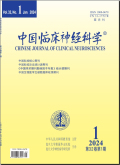Serial Neu rophysiologieal Changes in Experimental Selective Lumbar Spinal Nerve Root Compression in a Feline Model
The spinal nerve root may be subjected to compression in a variety of clinical conditions which may lead to disabling leg pain and disability. The objective documentation of the clinical symptoms by electrophysiological tests could be procedure dependent. In the experimental study of nerve root compression in animal models, electrophytsiological tests are one of the few available methods to assess the effects of in nerve root compression. The purpose of this study is to evaluate the effects of compression of the spinal nerve root on the motor conduction velocity(MCV) and cortical somatosensory evoked potentials(SCEP) over a period of 6 weeks in a feline model. Ten cats were used in this study. Under anaesthesia, a laminectomy at L6 and L7 was performed. The right L6 nerve root was exposed and compressed by a Surg i-loop around nerve root and maintained by a Ligacap. MCV was recorded by stimulating the proximal end of nerve root before and after compression. Stimulating the right posterior tibial nerve and recording at the skull performed CSEP. After nerve root compression, MCV showed a significant reduction of amplitudes (immediate:64 ± 11%; 3-week: 73± 13%; 6-week: 73± 12% p<0.01 ) . The lateneies of MCV were not significant changed. The amplitudes of CSEP were also reduced significantly (immediate:56±9%; 5-minute:74± 12%). The N1 peak disappeared and latencies prolonged. We conclude that amplitude changes of MCV and CSEP could be used for diagnosis of acute peripheral nerve injury in the feline model, which may have clinical implication.
nerve root、peripheral nerve injury、experimental study、evoked potentials、animal models、tibial nerve、used in
8
R5 ;R44
2005-07-07(万方平台首次上网日期,不代表论文的发表时间)
共1页
93








